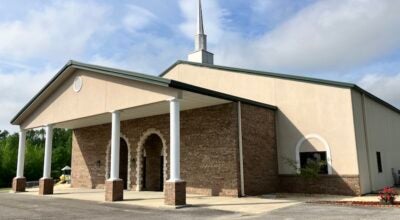Alabama’s college math: budget cut tuition hike
Published 9:29 pm Sunday, August 17, 2008
MONTGOMERY – Many students packing for the fall semester at Alabama universities better take more than clothes and computers. They’ll need extra cash to cope with double-digit increases in tuition.
University officials say the increases are higher than normal due to an 11 percent budget cut by the Legislature, plus rising costs for retirement, health insurance and utilities.
Tuition increases at Alabama’s public universities for in-state students taking a full-time load of 15 hours per semester for two semesters, as computed by the Alabama Commission on Higher Education:
Alabama A&M 0.0
Alabama State 21.1
Athens State 0.0
Auburn 11.4
Auburn-Montgomery 11.4
Jacksonville State 12.4
Troy 31.1
Alabama 12.3
Alabama-Birmingham 11.0
Alabama Huntsville 14.1
Montevallo 9.4
North Alabama 9.9
South Alabama 14.3
West Alabama 10.7
But the price hikes continue a trend Alabama has experienced for several years — tuition going up no matter whether the Legislature increases or decreases state appropriations for public universities.
Over the last six years, tuition has averaged going up 7 percent annually in Alabama, while state appropriations have averaged going up 10 percent, before taking the plunge for the fiscal year staring Oct. 1.
Nationwide, the average tuition increase at public universities has been 8 percent during the same period, according to the College Board, which tracts college costs.
The annual increase in tuition is more than double the average cost-of-living increase during that period.
For parents and students in Alabama, the new tuition rates represent the biggest hike since 2003 — another lean year for state appropriations.
Adeela Northern, a sophomore pyschology major at Alabama State University, said the school’s 21 percent increase in undergraduate tuition was “a little bit” more than she anticipated, and she had to increase her college loans to cover it.
Northern said she won’t feel the full force of the increase until she graduates and starts paying off her loans. “Then I’ll be like: Man, I’ve got this much to pay back!” she said.
The executive director of a lobbying group for Alabama’s universities offers this explanation for steadily rising tuition rates: Schools are in competition to offer the latest technology for teaching, to attract the best students, and to keep the top professors and researchers.
“Those kinds of investments make our cost increases greater than you might see on a CPI measurement,” said Gordon Stone of the Alabama Higher Education Partnership.
The tuition increases are no surprise. University officials warned legislators in the spring that they would have to hike tuition due to the national economic slowdown curtailing state tax collections and the Legislature cutting universities’ appropriations by $157 million below the current fiscal year.
Troy University leads the tuition hikes for in-state residents at 31 percent for some undergraduates, but not all. Alabama State is second with 21 percent, and the University of South Alabama third with more than 14 percent, according to figures compiled by the Alabama Commission on Higher Education.
For the fall semester, Athens State University has the cheapest annual tuition for in-state students taking a normal load of 30 hours over two semesters: $4,050. The state Department of Postsecondary Education, which oversees Athens and Alabama’s junior colleges, didn’t raise tuition on any campuses.
The University of Montevallo, where tuition went up 9 percent, ranks as Alabama’s most expensive public university with tuition at $6,650 per semester.
The College Board said the average tuition at four-year universities nationwide was $6,185 last fall. The figure for this fall isn’t available yet.
At Auburn University, tuition is increasing more than 11 percent.
At the University of Alabama System, tuition is going up 12 percent in Tuscaloosa, 11 percent in Birmingham and 14 percent in Huntsville.
Montgomery attorney Joe Espy, the chairman of the board of trustees at Alabama, said the budget cut hit at the same time universities are having to pay more for utilities, health insurance, retirement and fuel.
In addition to increasing tuition, UA System officials decided to eliminate about 300 jobs to save money.
“If we hadn’t made cuts, which we hated to do, we would have been looking at tuition increases of 25 percent to 30 percent,” Espy said after the board approved the tuition hikes.
Alabama A&M University is the only public university other than Athens State that didn’t raise tuition. University spokesman Jerome Saintjones said tuition went up 10 percent a year ago and university officials decided not to hit students with another increase so soon.
“I doubt that happens again next time,” he said.
At Troy, the 31 percent increase won’t affect the majority of students, said Richard Federinko, senior vice chancellor for student services and administration.
For in-state students, the $177 rate per class hour is not going up. But in the past, students paid for their first 12 hours each semester and then got hours 13 through 16 at no extra charge. Starting this fall, they will pay for every hour.
For full-time students that translates to a 31 percent increase. For part-time students, who make up 54 percent of Troy’s students, tuition will be the same, Federinko said.
Even with the changes, Troy remains in the middle among Alabama’s public universities in charges for full-time students, he said.






